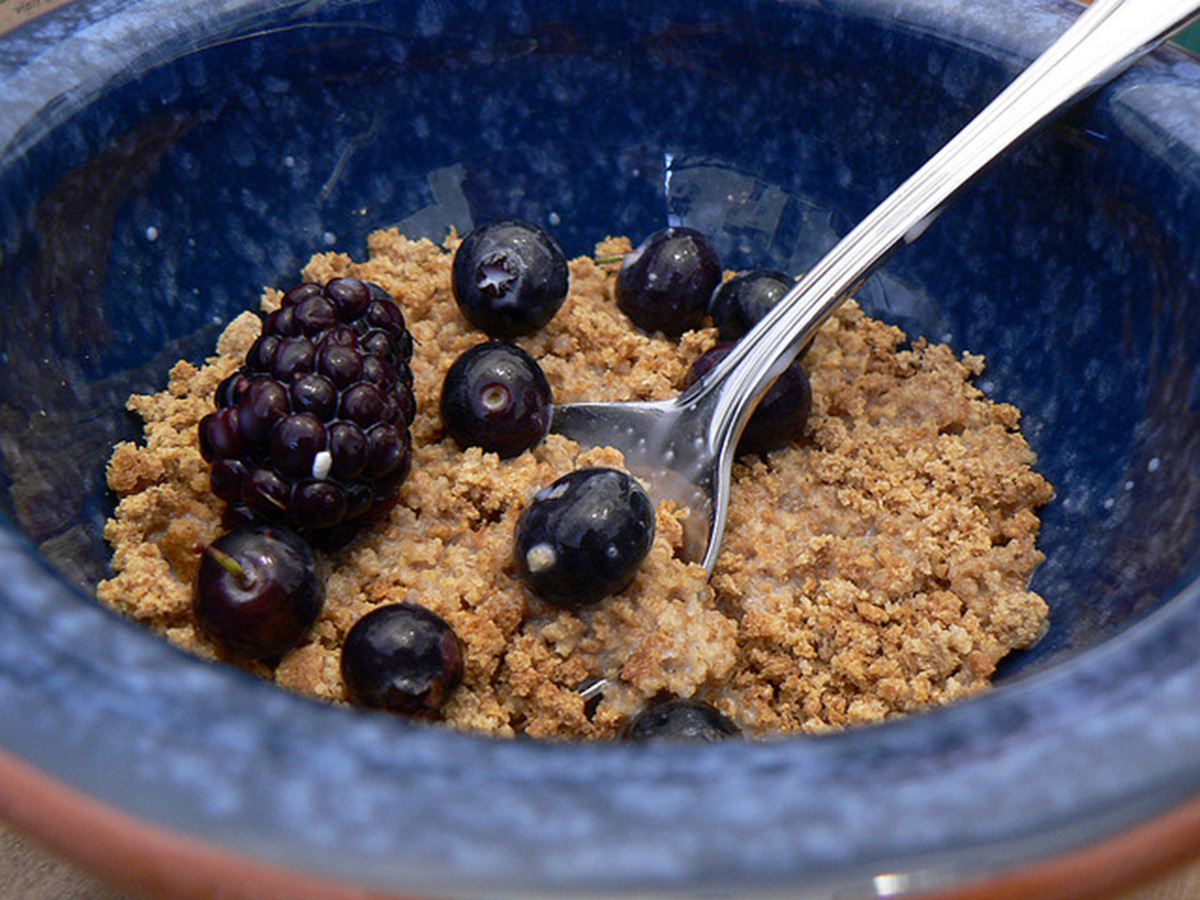Table of Contents
Adding Nuts
Nuts are tasty, especially when added to breakfast cereals. They add a little bit of nutty flavor as well as that delightful crunch. Although nuts provide a good source of protein and healthy fats, they also contain quite a number of calories. Show caution, and don’t add more than two tablespoons to your cereal at the most.
Upping The Fiber With Dried Fruit
Dried fruit such as bananas, berries, raisins and cherries add a certain sweetness to your cereal as well as a little extra fiber, so they can’t be bad can they? Yes they absolutely can. When fruit is dried, it is condensed, meaning there is very little fluid or water left in them. This creates a density of calories. For example, just a quarter of a cup of cranberries is equal to more than 100 calories! You are far better off using fresh fruit.

Cereal Choice
What Should You Look For In Cereals?
Now that we know what the more common mistakes are when choosing and eating breakfast cereals, it is even more important to know what you should be looking for when making a cereal choice.
Sugar Content: For a healthy cereal that is going to help you lose weight not gain it, you want to get a cereal that has less than 8grams of sugar per serving, and even better is if you stick to one that has less than 5 grams of sugar per serving.
Whole Grains: Not only is a diet containing whole grains good for weight loss, it can also help to lessen the risk of developing heart disease and diabetes. But don’t rely on the advertising on the box; make sure you check the list of ingredients. What you want to see is that it is manufactured from 100 percent of whole grains. When you look at the list, the very first ingredient should contain the word ‘whole’, except for bran which isn’t a whole grain.
Fraudulent Fiber: Every person needs some level of fiber in their diet to stay healthy, promote weight loss, and help to prevent certain serious diseases. But be wary of those that claim an extraordinarily high level of fiber, as often is it composed of what is called isolated fibers, such as soy, chicory root or psyllium. What you need to look for, is a cereal that contains 5 grams of fiber, or at the very least, 3 grams of fiber.
Too Salty: Salt, or sodium, is often found in everyday foods including many breakfast cereals. Salt can not only lead to other health issues, it also has this tendency of making us crave bad foods. For healthy cereal, choose one that contains less than 250 milligrams of salt per cup of cereal.
READ Could Your Breakfast Cereal Be Sabotaging Your Weight Loss Plans?
Final Notes
There are many little tips and tricks regarding your breakfast cereal that can help you eat a healthy amount and not gain weight. For starters, don’t leave the box out on the kitchen counter where you can see it. Remember the saying, ‘out of sight, out of mind’. Put the darn thing away in the cupboard so you’re not tempted all through the day to stuff your hand in the box. Also, eating your cereal with a teaspoon rather than a larger spoon can slow down the consumption, therefore allowing your tummy to feel full quicker. Whatever you do, don’t give up on cereal as part of your weight loss journey. Simply learn how to eat it appropriately.
- Photo courtesy of vox_efx: www.flickr.com/photos/vox_efx/2912195591/
- Photo courtesy of stuart_spivack: www.flickr.com/photos/stuart_spivack/477854708/


Your thoughts on this